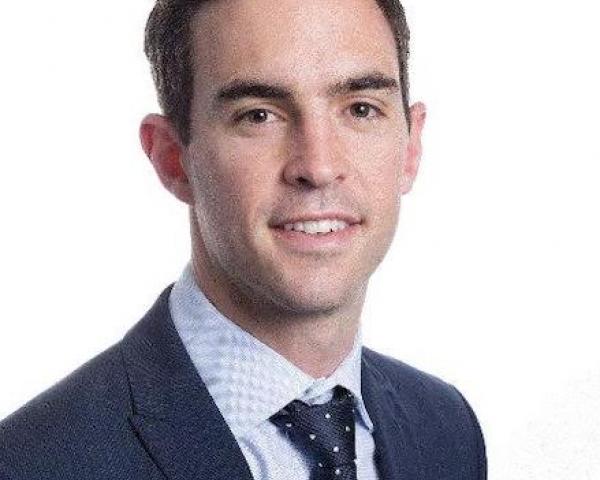According to the National Association of Insurance Commissioners (NAIC), the top 24 commercial auto insurers write more than $45 billion in premiums, but for the last decade commercial auto insurance has been a challenging and mostly unprofitable line of business. According to a report from AM Best, underwriting losses for the commercial auto insurance sector reached a high of $4 billion in 2019. Between 2013 and 2018, commercial auto insurers reported $14 billion in losses.
Litigation, social inflation, driver safety, rising accident costs and a decaying public highway infrastructure have all contributed to a hard market for commercial auto lines and ever-rising insurance premiums for companies that operate commercial fleets.
“Commercial auto’s been pressured for roughly a decade, and I think a lot of carriers continue to struggle with auto performance,” said Tony Fenton, vice president of commercial lines underwriting and product, Nationwide, one of the top five commercial auto insurers, in a recent podcast. “There are a lot of different moving parts there. You have distracted driving, you have social inflation in terms of the results and loss pressures, but it's also keeping up with the technology, and understanding driving behavior and leaning into truly matching up rate and exposure. So that’s an interesting line that I think continues to be a pressure point in the industry.”
The COVID-19 pandemic brought a brief respite. In 2020, the commercial auto insurance segment posted its best underwriting result in a decade, largely attributed to continuing rate increases and a steep decline in driving due to the pandemic. According to a Fitch Ratings report, the commercial auto combined ratio of 101.6 for 2020 was nearly eight percentage points better than the 2019 rate. Fitch said it expects further improvement to move the commercial auto combined ratio to approximately break-even in 2021. Fitch also observed an “unprecedented decline” in commercial auto claims frequency. Industry data reveals a 26% decline in total reported liability claims in accident-year 2020.
Unfortunately, Fitch was quick to point out that the road to future profitability “may be challenged as driving activity returns to past norms, while claims severity patterns remain problematic and pricing momentum may have peaked.” As the economy recovers post-pandemic, our roads will get a lot busier. The U.S. Department of Transportation estimates that an additional 2.6 million vehicles will be registered in 2021.
“We believe underwriting profits for commercial auto insurers will likely remain elusive as the economy opens back up,” predicts Standard & Poor's in a Global Ratings report, “Commercial Auto Insurers Face a Long Haul to Profitability as the U.S. Economy Reopens and Confronts Shortages.”
With the hard market – characterized by increased premiums, reduced capacity and more rigorous policy requirements, underwriting rules and risk appetites – not likely to go away any time soon, commercial auto insurers are reimagining how they’re doing business today. Insurers are increasingly focused on operational efficiencies and technological advances as a means of improving underwriting margins and paving the way to profitability.
“The auto insurance industry needs to prepare for fundamental transformation, similar to the digital revolution we’ve seen in general,” says Abel Travis, VP & head of Fundamental Underwriters, a division of AF Group, and a specialist in commercial auto insurance. In this article, we look at a few of the key market trends and technologies to watch in commercial auto insurance in 2022 and beyond.
1. Telematics in Top Gear
Over the past few years, we have seen astonishing advances in on-board vehicle technologies that have the potential to make the roads safer for everyone. Commercial fleets were early adopters of telematics solutions, and the technology has become a mainstay. Telematics solutions send data from sensors and devices in the vehicle to the cloud, where it can be aggregated, processed and analyzed to provide insights. The types of information captured through telematics might include vehicle performance and maintenance data, mileage and driver behavior. Commercial auto insurers can leverage this data to more accurately assess and price risks during the underwriting process and to settle claims more effectively. Policyholders can benefit from telematics because, if the data demonstrates a track record and culture of driver safety, it can reduce the cost of their premiums upon renewal.
“Telematics is a slow-moving cyclone that is gaining speed over warm waters,” says Carey Anne Nadeau, co-founder and co-CEO of Loop and former CEO and founder of Ometry. “Telematics is a rich, real-time source for information about the location, usage and behaviors of drivers. I think there will be a derivative market of new products built from these data that help carriers realize more value from their telematics investments.”
Rob Galbraith, insurance futurist and best-selling author of The End of Insurance As We Know It: How Millennials, Insurtech and Venture Capital Will Disrupt the Ecosystem, sees telematics as part of a fundamental shift from “a point-in-time, periodic and historical view of risk to one that leverages the power of modern technologies such as sensors, cloud computing and advanced algorithms including AI to move closer to a real-time view of risk.”
Galbraith points out that turning the massive amount of data collected through telematics into actionable information remains a work in progress for insurance companies: “Insurers can now directly ‘observe’ behavior and conditions, ‘see’ near misses and have access to a ton more data than ever before. I’m not aware of a single carrier, however, that has fully been successful in not just capturing and integrating this data but using it in their pricing and underwriting processes.”
See also: Touchless Auto Claims: One Year On
Insurers that can effectively turn this data into meaningful information that an underwriter can easily digest and use will gain a significant boost. Eight hours of dashcam video from the cab of a transport truck, for example, isn’t particularly useful to an underwriter. To create real value, the data needs to be distilled in a human-friendly way that is easy for insurance professionals to consume.
“Harnessing large volumes of data from real-time sources can help insurers develop new products and refine pricing strategies. When combined with a robust operating strategy, advanced analytics can significantly increase underwriting profitability and provide a valuable market differentiator,” according to Ernst & Young (Source: IMS, "Commercial Insurance Telematics: Key Market Trends and Growth Opportunities”).
2. Tackling Distracting Driving
According to a recent survey from National Institute of Occupational Safety & Health, 47% of commercial drivers surveyed admitted to reading text messages while driving. Even more alarmingly, 34% of surveyed drivers said they have fallen asleep while driving, and 24% said they’d had a near-miss accident in the past week. According to Standard & Poor's, truck accidents are typically caused by driver error such as failure to follow speed limits, distracted driving, fatigue, mechanical failures and poor road conditions. Emerging telematics-based insurance solutions that provide real-time feedback to drivers may hold the key to addressing the problem of distracted driving.
“I believe that auto telematics will continue to drive a culture of safety across mobility,” Abel Travis says. “Telematics developers will continue to improve this technology, to help correct unsafe driving behaviors in real time, thereby improving driver performance. Distracted driving will continue to be tackled by technology providers, and autonomous features will identify and correct those unsafe behaviors. Some of this is already occurring today, especially in trucking and health and human services, two industries served by Fundamental Underwriters.”
Today’s telematics-equipped vehicles know a great deal about their drivers' behavior behind the wheel – everything from driving patterns, speeding, texting, multitasking, hard braking and airbag deployments in the event of a collision. AI, sensors and cameras trained on the driver can also detect dangerous behaviors such as distracted driving, bad habits or falling asleep at the wheel and provide real-time feedback.
“To understand how much risk the driver was taking at a given time, you really have to observe the driver,” says Roberto Sicconi, CTO and co-founder of dreyev (pronounced “drive”). “And the best way to observe is by using a camera that looks at the face of the driver, maybe even the hands, and then puts that into context. This is what we want with dreyev. We want to make sure that we understand what the driver is doing at any given time, in the context, and then based on that we warn the driver when there’s a need for it.”
For insurers that are equipped to harness this data, it provides invaluable usage-based insights for pricing: Commercial vehicle owners with good drivers are rewarded with better rates, while the dangerous or reckless behavior of bad drivers can be addressed by commercial fleet operators, either through retraining or replacing the driver.
A serious or fatal crash can be transformational to the business,” Carey Anne Nadeau says, “and we want to be making sure, as responsible commercial auto insurers, that we’re providing the risk management tools that the risk managers within the fleets need to keep people safe on the road.” Insurance carriers and brokers and their commercial clients need to work together to identify and mitigate liability risks, so everyone wins.
3. Autonomous Vehicles – AI in the Driver’s Seat
One technological breakthrough that everyone including the commercial insurance industry has been anticipating for some time is autonomous vehicles. When we first heard about them, the predictions were that we’d see them on the road in just a few years. Today, we know they’re out there being road-tested, but now the auto industry is saying it will be more like 10 to 15 years before they’re in widespread use.
“I think insurers run the gamut from still believing in science fiction to totally embracing it,” says Guy Fraker, chief innovation officer, IE Advisory, and one of the world’s leading authorities on the risks and opportunities associated with autonomous vehicles. “And the commercial fleet is a really interesting question. I’ve always hypothesized that it’s the tip of the spear, that this is where we’ll see the adoption first.”
But the mainstream rollout of autonomous commercial vehicles has hit a few bumps in the road. Questions remain about whether the public is ready for self-driving vehicles – especially a fully loaded 35,000-pound semi-truck barreling down the highway with nobody at the wheel.
One reason for the delay in adoption is an inbred distrust of artificial intelligence, and the unreasonable expectation that AI must be a perfect driver when we know that most human drivers are far from perfect. In a webinar on “The Ways Machine Learning and AI Can Fail,” Brian Lange, partner and data scientist at Datascope, cautions, “Don’t let perfect be the enemy of good.” Lange’s point is that human users are often hyper-critical of machine learning and AI, and this deep mistrust of AI outcomes can prevent organizations from realizing the benefits of AI. An AI solution may be much more accurate than a human at performing a given task, but the first time the AI makes a mistake, the tendency is for users to conclude that the solution isn’t very good and can’t be trusted.
As Guy Fraker reminds us, “Abraham Lincoln rode a 500-mile circuit on horseback in order to represent his clients. From his horse he prepared for trials, followed Supreme Court decisions and slept quite a bit. Do you know what never happened on his 1,500 miles per year riding a horse? Not once did his horse run into anything. The cars never have to be human smart to improve upon human performance – as smart as a horse will do.”
Autonomous vehicles are coming, and commercial auto insurers need to be ready. “I believe that we will see further adoption of autonomous technology, pioneered at companies like Tesla, and adopted by companies such as Nikola,” Travis says. “As we’ve seen companies like Rivian move into electric and autonomous vehicles, I believe we will see more embedding of insurance with the cost of the vehicles to offer a rounded solution to consumers.”
4. The Ridesharing Revolution
One bright spot during the pandemic was the growth of the ridesharing industry, aided by people opting out of public transportation on crowded trains, buses and streetcars. The industry also welcomed new drivers who had previously been employed in industries hard-hit by the pandemic, such as retail and hospitality.
“There’s no question that we are at the point of embracing ridesharing as an economic juggernaut,” Fraker says. “Rideshare platforms are one of the most transformational technology platforms outside of social media.” For insurers, the new ridesharing business model has been a catalyst for fundamental change.
“History will look back on ridesharing as a pivotal point in the transformation of insurance,” Fraker explains. “Throughout the history of the industry, there’s been this almost old Berlin Wall-like divider that was immovable – it might as well have been the Himalayan Mountain range – between personal lines and commercial lines. And that enormous immovable barrier got blown up by the mixed use of rideshare, where it was part commercial, part personal. The industry realized that they had to figure out how to go back and forth between personal use and commercial use.”
The ridesharing industry has created new opportunities for insurers, as well as new challenges in navigating the grey areas between commercial and personal vehicle use.
“I know that there are a lot of drivers who are using their own car with their own regular insurance without declaring to the insurance company that they’re using it for occasional ridesharing,” says Roberto Sicconi of dreyev. “And when they do that, they put themselves at serious risk because, if they get into a crash, and then the crash happens to involve some other passenger that was not supposed to be part of a family or so on, they may not get the coverage.”
“I believe Uber, Lyft and other rideshare companies offer special additional policies for drivers that cover them during the rides,” Sicconi adds. “And then you have to demonstrate that you were on a ride with somebody in the vehicle rather than approaching the place where you wanted to pick up the customer, but you were on your own. So, there are some tricky situations that I don’t think are always sorted out properly.”
See also: 3 Trends Transforming Auto Insurance
5. Reimagining the Insurance Back Office With AI
While revolutionary technologies like autonomous vehicles may steal the headlines, there is still a lot of work to be done in the insurance back office to streamline manual underwriting and placement processes, reduce operating costs and improve the policyholder experience. Commercial auto insurers are looking to technologies like AI, machine learning and natural language understanding to harness the power of their data and automate core processes like data extraction and ingestion, submission intake and triage and policy checking to improve their margins and grow their revenues. While they might not seem as futuristic as a self-driving semi-trailer truck in the center lane with no one at the wheel, these data-driven operational improvements are part of a “quiet revolution” in the industry that is every bit as visionary and transformational for commercial auto insurers on the long road to profitability.
You can find this article originally posted here on Chisel AI.














































